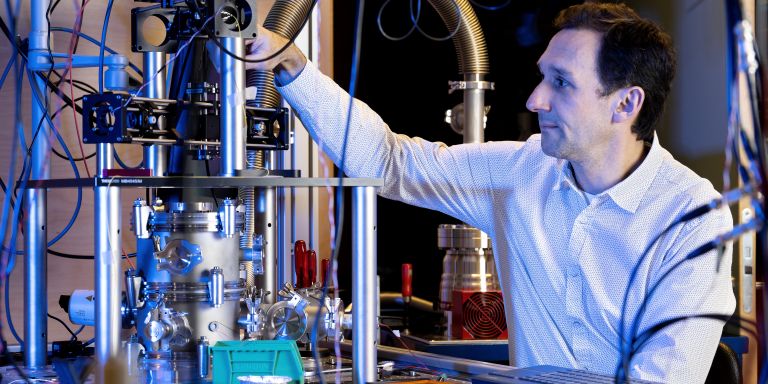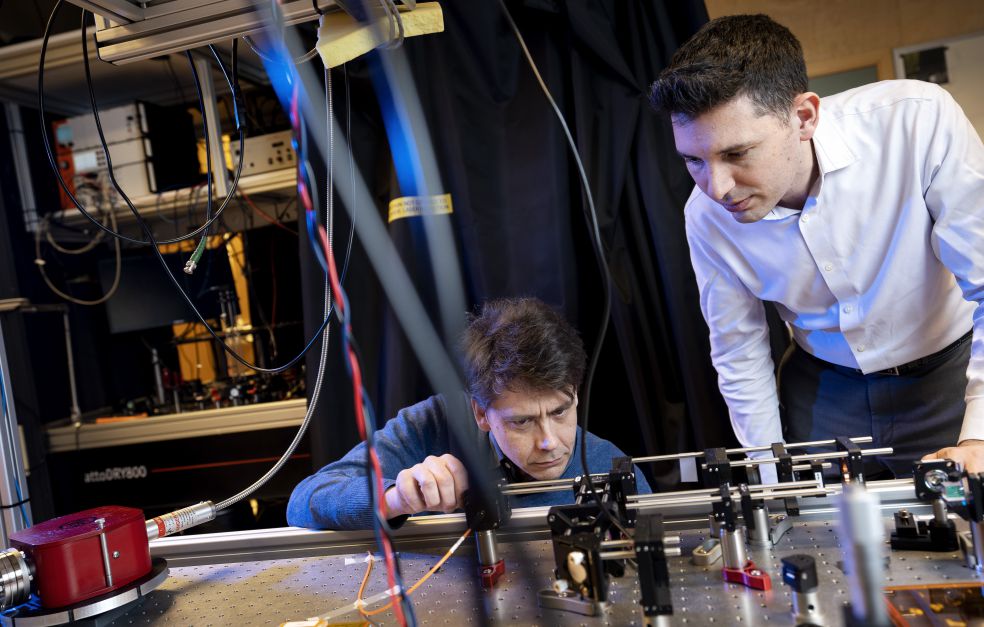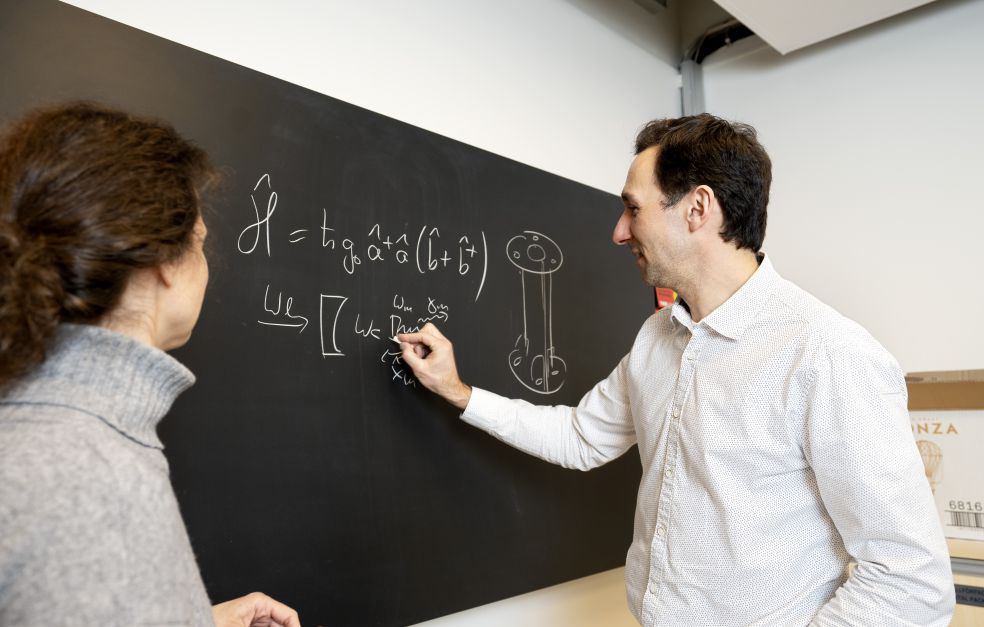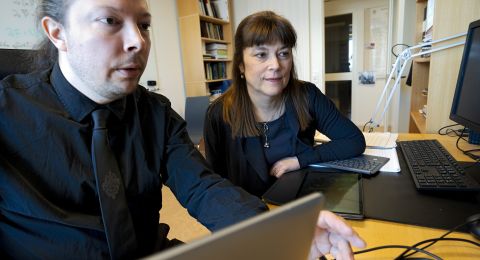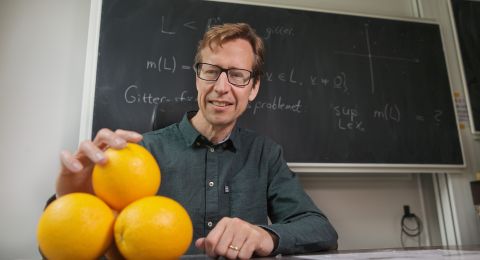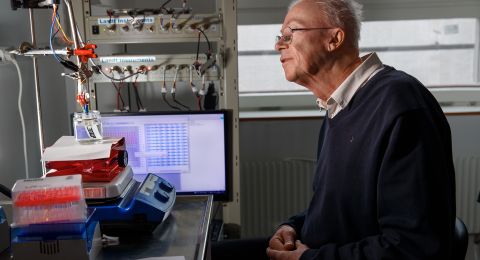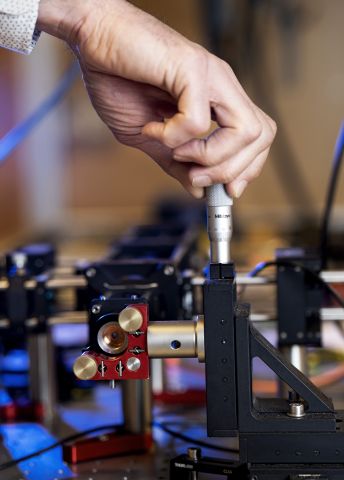
Project Grant 2022
Light strongly interacting with mechanical motion
Principal investigator:
Witlef Wieczorek, Associate Professor of Physics
Co-investigators:
Chalmers University of Technology
Andreas Isacsson
Janine Splettstößer
Philippe Tassin
Institution:
Chalmers University of Technology
Grant in SEK:
SEK 27 million over five years
Quantum physics, also known as quantum mechanics, gives an accurate physical description of the most minute particles. However, this world of particles does not function in the same way as the conventional world. This is because the laws of physics change at smaller length scales. This may seem hard to understand, but it gives researchers fantastic opportunities to understand and explore how everything fits together.
“In the quantum world, for instance, it is entirely natural that particles can exist in multiple states and in different places simultaneously. We don’t know why this is so, why the laws of quantum physics are so different from those we’re used to. But we can exploit these states to create various applications,” says Wieczorek, who is researching at Chalmers University of Technology. For much of his research career he has been endeavoring to control and manipulate quantum states.
Method with many advantages
In quantum physics, to explore small forces it is essential to be able to measure mechanical motion or the properties of particles as precisely as possible. Wieczorek and his team are about to take on a challenge involving precisely this kind of advanced measurement, in a project funded by Knut and Alice Wallenberg Foundation.
The aim of the project, which is based on experiments, human expertise, and artificial intelligence, is to create a strong interaction between the particles of light and of mechanical motion – something no-one has yet succeeded in doing. This may in turn pave the way for new, more precise measuring methods.
“Light consists of particles – photons – just as mechanical motion also consists of particles, known as phonons. Creating a strong interaction between photons and phonons is an enormous technical challenge. If we succeed, we’ll be able to create quantum mechanical states that can be used to make ultra-precise measurements of much smaller forces and of mechanical displacements than are currently possible,” he says.
One advantage of the method the researchers are working on is that it enables scientists to create quantum mechanical states from mechanical motion in direct interaction with light. This simplifies the process, which at present requires more stages than this. Another key aspect is that the photons survive the interaction, i.e. they can be measured without being destroyed. The same goes for the quantum information they carry.
New tools for quantum technology
More precise measurement methods will open the door to many areas of research. Wieczorek elaborates:
“We can improve our ability to measure small forces that exist only at the microscopic level, where there are currently few measurement methods available. This applies for example to “Casimir forces”. The project may also pave the way for better measurement methods of gravity at microscopic length scales, something that is difficult at present.”
Another important application is in the field of quantum technology, which makes use of quantum physical phenomena to create new technical solutions. Wieczorek hopes that the team’s research will lead to new quantum sensors and facilitate the development of quantum transducers.
“Quantum transducers are a key element in a future quantum internet: a network that can interconnect quantum processors, such as quantum computers or other quantum devices, over large distances,” he explains.
But he also stresses that the researchers have likely not yet identified all potential applications for the results of the project.
“If we achieve our goals, we will unlock completely new opportunities in the interaction between light and mechanical motion. We want to create a new method, a new tool, and we’ll also be exploring how this can best be put to use. So even though we have a plan, I think we’ll find new and unexpected paths during the project – discovering things we haven’t even thought of yet,” he says.
Collaboration and synergies
He is looking forward to working with the other project members, all of whom have their complementary fields of expertise – fields that are vital to the project.
“It won’t be easy to achieve our goals, and none of us would have been able to do so on their own. But together we have a good chance of getting there, since the project brings together researchers possessing a wide range of complementary expertise that will be needed to meet the challenges we face. This grant has given us a wonderful opportunity,” he says.
Text Ulrika Ernström
Translation Maxwell Arding
Photo Johan Wingborg
